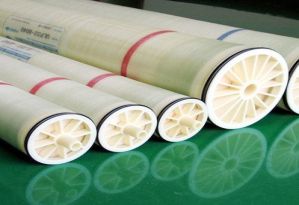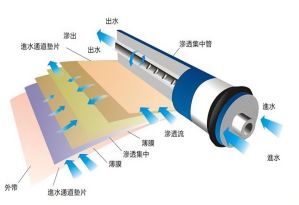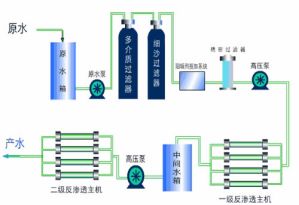Water treatment technologies play a crucial role in modern life and industries. MBR (Membrane Bioreactor), UF (Ultrafiltration), and RO (Reverse Osmosis) are three commonly used water treatment technologies, each with unique principles and applications. Understanding their basic principles and differences can help you choose the most suitable solution.




Basic Principle: MBR is a technology that combines membrane filtration with biological treatment. It utilizes microorganisms in a bioreactor to decompose organic pollutants, while membrane filtration removes suspended solids and microorganisms. An MBR wastewater treatment system typically consists of a biological reaction tank and a membrane module, which retains activated sludge and most suspended solids, resulting in high-quality effluent.
Advantages:
- Efficient Pollutant Removal: MBR systems effectively remove organic matter, nitrogen, and phosphorus.
- Small Footprint: MBR systems require less space compared to traditional activated sludge processes.
- High Effluent Quality: The effluent can meet reuse standards, suitable for various recycling scenarios.
Applications: MBR technology is widely used in municipal wastewater treatment, industrial wastewater treatment, and water reuse projects.
Basic Principle: UF is a physical separation process that uses a semipermeable membrane to filter water. The pore size of ultrafiltration membranes typically ranges from 0.01 to 0.1 microns, effectively removing suspended particles, bacteria, and viruses, but not dissolved salts and small organic molecules.
Advantages:
- High Retention Efficiency: UF can retain most suspended solids, bacteria, and some viruses.
- Simple Operation: UF systems are easy to operate and have lower maintenance costs.
- Wide Applicability: Suitable for both pretreatment and final treatment, especially effective in drinking water and industrial water treatment.
Applications: UF technology is commonly used in drinking water treatment, industrial water pretreatment, and advanced municipal wastewater treatment.
Basic Principle: RO is a process that removes ions, molecules, and larger particles from water by using a semipermeable membrane. The pore size of RO membranes is very small, capable of retaining most dissolved solids and organic matter, including dissolved salts, making RO systems capable of producing highly purified water.
Advantages:
- High Desalination Efficiency: RO technology effectively removes dissolved salts and other soluble substances from water.
- High Effluent Quality: The effluent quality is extremely pure, suitable for high-purity water applications.
- Versatility: RO systems can be used for seawater desalination, industrial water purification, and municipal water deep purification.
Applications: RO technology is widely used in seawater desalination, industrial pure water production, drinking water purification, and wastewater reuse.
Technology Comparison
- Treatment Targets: MBR is mainly used to remove organic pollutants and suspended solids, UF for removing suspended particles and microorganisms, and RO for removing dissolved salts and small organic molecules.
- Effluent Quality: RO provides the purest effluent, suitable for high-purity requirements; MBR and UF provide high-quality effluent but not as pure as RO.
- Application Scenarios: MBR is often used in wastewater treatment and water reuse, UF in pretreatment and final treatment, and RO in high-purity water scenarios like desalination and industrial pure water production.
By understanding the basic principles and differences of these technologies, you can better choose the appropriate water treatment solution to meet various needs.





 Language
Language






 Network Supported
Network Supported